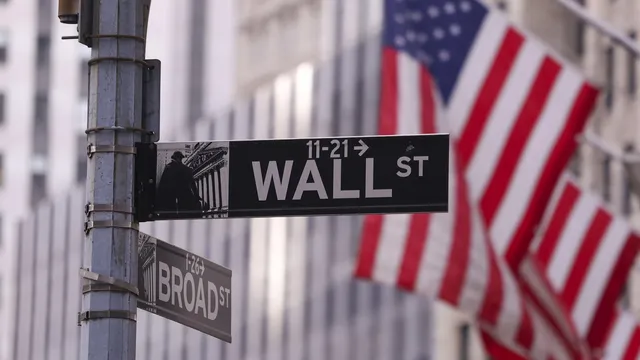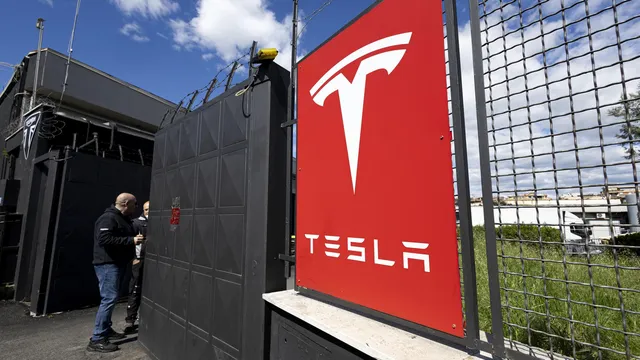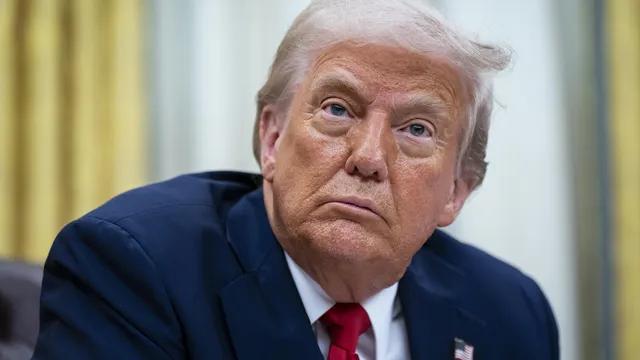U.S. stock indexes recovered from their lows, helped by gains in heavy technology stocks and Tesla, as investors awaited details of new U.S. tariffs to be announced on April 2.
Financial markets have been volatile in recent weeks as investors assessed the economic implications of US President Donald Trump's sweeping tariff plans. They have sparked fears of a slowdown in the US economy and higher inflation.
The benchmark S&P 500 ended the first quarter down 4.6 percent, marking its darkest quarterly period since July 2022, Reuters reported.
"The market is pricing in a worst-case scenario, and if we're not at washout levels yet, we're pretty close. I would not be a seller in this correction," said Gina Bolvin, president of Bolvin Wealth Management Group in Boston.
White House officials have drawn up plans for a 20 percent surcharge on most goods imported into the U.S., the Washington Post reported. Trump is due to unveil his plan for the tariffs at 10 p.m. EDT at an event in the Rose Garden on April 2.
After falling about 1 percent earlier, the S&P 500 gained ground during the session, led by declining technology stocks.
Microsoft rose 1.6% and Tesla jumped 5.9%.
Other big tech stocks, such as Amazon.com, Nvidia and Meta Platforms, each rose about 1%.
Investors seemed to ignore data that showed U.S. manufacturing contracted in March after expanding for two straight months, and a gauge of factory gate inflation jumped to its highest level in nearly three years amid growing concern over tariffs on imported goods.
The labor market report also showed that the number of job openings fell to 7.568 million in February.
The Dow Jones Industrial Average rose 48.75 points, or 0.13 percent, to 42,057.16. The S&P 500 rose 21.65 points, or 0.40 percent, to 5,634.07 and the Nasdaq Composite rose 146.62 points, or 0.87 percent, to 17,450.19.
Trump has already introduced tariffs on aluminum and steel imports, as well as increased duties on goods from China. The higher duties on autos will take effect on April 3.
On March 31, Goldman Sachs raised the probability of a U.S. recession from 20% to 35% and said it expects more U.S. interest rate cuts this year.
Among individual stocks, Johnson & Johnson fell 5.2%, dragging the broader health care sector to the bottom. A U.S. bankruptcy judge rejected the company's $10 billion bid to end tens of thousands of lawsuits alleging that its baby powder and other talc products cause ovarian cancer.
The conservative news outlet Newsmax jumped 62% after debuting on the New York Stock Exchange on March 31, up more than 700%.
PVH Corp rose 17% after the apparel maker's annual revenue forecast exceeded analysts' expectations.
Tesla shares rose 6.2% ahead of the first-quarter auto shipments report on April 2. The company's stock fell about 36% in the three months through March 31.
Advancing issues outnumbered decliners by a ratio of 2.3 to 1 on the NYSE and 1.5 to 1 on the Nasdaq.
The S&P 500 posted seven new 52-week highs and five new lows, while the Nasdaq Composite registered 20 new highs and 316 new lows. | BGNES

 Breaking news
Breaking news
 Europe
Europe
 Bulgaria
Bulgaria







